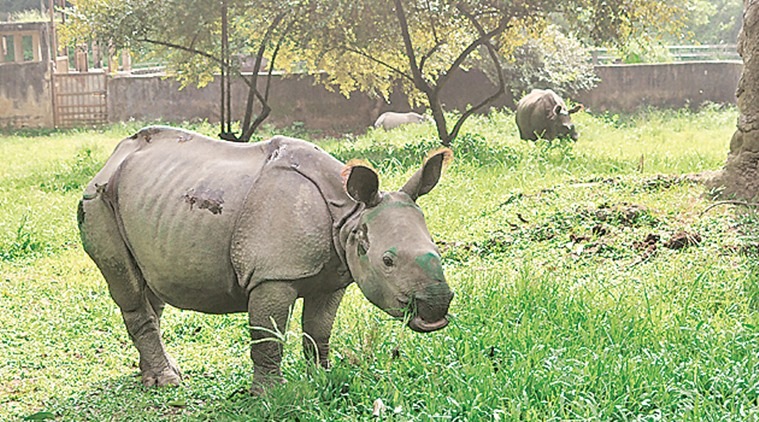 Patlakhawa’s population of rhinos had dwindled after the Torsa changed course
Patlakhawa’s population of rhinos had dwindled after the Torsa changed course
Around 60 years after losing its native population of rhinoceros, Patlakhawa area of Cooch Behar is set to receive its first batch of the species from nearby sanctuaries.
Patlakhawa’s population of rhinoceros had dwindled after the Torsa changed its course in the region. Officials of the state wildlife department have now identified this erstwhile rhinoceros habitat and are reintroducing the species from the Gorumara and Jaldapara sanctuaries in north Bengal.
“As the Torsa changed its course, the habitat was destroyed and rhinos could no longer sustain there. It is natural for the rivers of North Bengal to change course every 25 years. The Torsa has been changing its course over the years and now grasslands have reappeared in this area, which is the natural habitat of rhinos,” said state Chief Wildlife Warden and Principle Conservator of Forests Ravi Kant Sinha.
Sinha said the decision to establish an “extension colony” was taken to ensure that “all the eggs were not kept in one basket”.
“The population of the rhinoceros in Bengal has also grown and is stable now. In 1988, there were 14 rhinos in Jaldapara. Today, Jaldapara and Gorumara combined contain 220 rhinos. We will be relocating at least five or six rhinos to begin with. We have, of course, consulted the local communities and are doing this with their permission. If the locals don’t consent, then it becomes impossible to carry out such a programme, because it becomes difficult to control poaching,” he said, adding the department has already mapped out the area and begun the construction of a protection fence. He added that unlike with elephants, man-rhino conflict has always been minimal as rhinos rarely stray out of their territory.
There have been at least three cases of rhino poaching in north Bengal in 2017, the last of which took place in December in Jaldapara. While wildlife officials had information that a poaching attempt would be made, they were unable to prevent it. However, within five hours of the incident, seven persons — five from West Bengal, one from Arunachal Pradesh and another from Butan — had been apprehended. A rhino horn was recovered.
Rhino horns, Sinha said, are usually sent to China or South East Asian countries. A single horn can fetch up to Rs 10 lakh in the international market.
“However, the situation in Bengal is not as bad as in Assam. Here, we usually record a single case of rhino poaching a year, on an average. Assam records between 10-15 cases of rhino poaching annually. We will have to take preventive measures in Cooch Behar as well. But it is better if the rhinoceros population is spread out,” said Sinha.